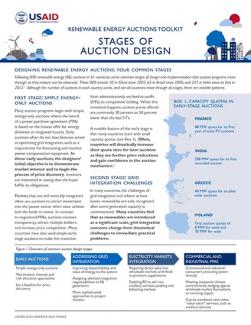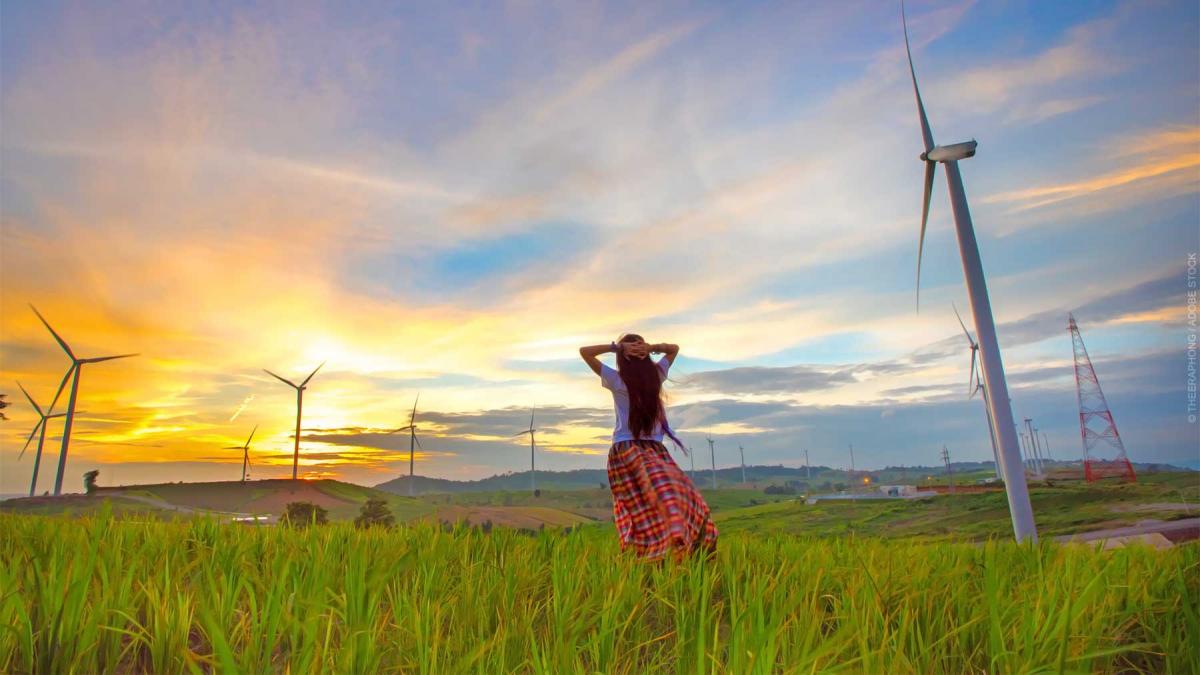Following 800 renewable energy auctions in 61 countries, it is now possible to identify some common stages of design and implementation that auction programs move through as they mature.
An auction is a competitive process for policymakers to procure electricity generated by renewable energy. Policymakers can hold auctions regardless of market maturity and institutional capacities and can choose different entities to conduct auctions. An auctioneer can be an energy regulator, electricity market operator, or dedicated agency. The auctioneer issues a tender with clear rules in an online or other public platform, which ensures a transparent and competitive procurement process.
Countries that are most successful at performing auctions embrace change and allow for constant adaptation. The maturing of an auction program is a long-term process that responds to changing priorities, results, and opportunities. Therefore, the laws and regulations establishing auction programs should allow for evolution in auction designs and approaches.
While the four auction design stages represent common patterns of development, they are not experienced by all countries.
First Stage: Simple, Energy-Only Auctions
Many auction programs begin with simple, energy-only auctions, where the award of a power purchase agreement (PPA) is based on the lowest offer for energy, which is measured in kilowatt or megawatt hours. In these early auctions, a policymaker’s initial objective is to demonstrate market interest and to begin the process of price discovery. Markets that are still vertically integrated often use auctions to attract investment into the power sector when state utilities lack the funds to invest. Many policymakers also have used simple early-stage auctions to make the transition from administratively set feed-in tariffs (FITs) to competitive bidding. A notable feature of the early stage is that many countries start with small capacity quotas.
Second Stage: Grid Integration Challenges
Policymakers often address the challenges of grid integration in the second stage of auction design by adding grid integration requirements, the timing of energy output, and the desired locations for renewables. It is also a time when many countries begin to make significant investments in modernizing and digitizing their distribution and transmission grids.
Many policymakers identify specific geographic zones where they want renewable capacity, and in some cases, new transmission capacity is added to serve these zones. A typical approach has been to auction energy supply during particular times of the year and particular hours of the day. In countries that use a single buyer rather than a wholesale market, the single buyer pays an additional amount for energy in certain time blocks. In countries with wholesale markets, an entity (market operator, distribution utility, etc.) will make additional payments for energy at a certain time.
Renewables-plus-storage is another increasingly popular strategy to address the timing of energy output. Numerous countries are now using this to enhance dispatchability and improve the value of energy.
Third Stage: Electricity Market Integration
In the third stage of auction program design, policymakers seek to integrate renewable energy into electricity markets. The most common innovations used to accomplish this are the feed-in premium (FIP) and contract for difference (CFD), which require that renewable generators sell directly into the country’s wholesale market. In addition, renewable energy generators are also allowed to participate in ancillary services and balancing markets. The use of FIP and CFD auctions minimizes public subsidies for renewables and provides renewable generators strong signals regarding the value of their energy in the market. In order for this approach to work, there needs to be a reliable wholesale market in operation. In addition, depending on program design, the off-taker or policymaker may still be responsible for subsidies in the form of the cost of new transmission facilities.
Fourth Stage: Commercial and Industrial Power Purchase Agreements for Renewables
At the fourth stage of auction program design, commercial and industrial (C&I) consumers procure power directly from renewable energy plants or virtual power plants instead of via wholesale markets or utilities. In many cases, buyers are using auctions to obtain the best prices. The C&I buyers’ reasons for procuring renewables through PPAs could be corporate climate commitments (in the United States and Europe), hedging against wholesale market fluctuations (mostly in Europe but starting also in India and Latin America), or security of supply (in developing countries, often for manufacturing sites or critical public facilities such as hospitals). In these cases, auction designers benefit from technical assistance on corporate auctions and regulatory enabling environments.
In countries where state utility and corporate auctions run parallel to one another, there may be competition between private and public auction schemes and consequently an impact on the competition level and prices achieved in auctions by state utilities.



